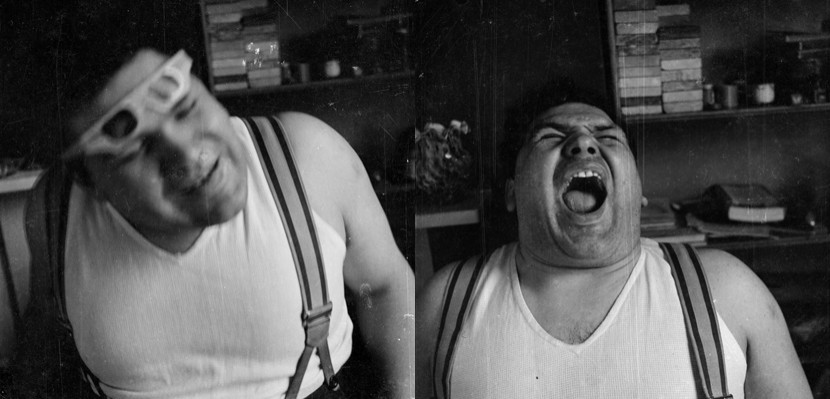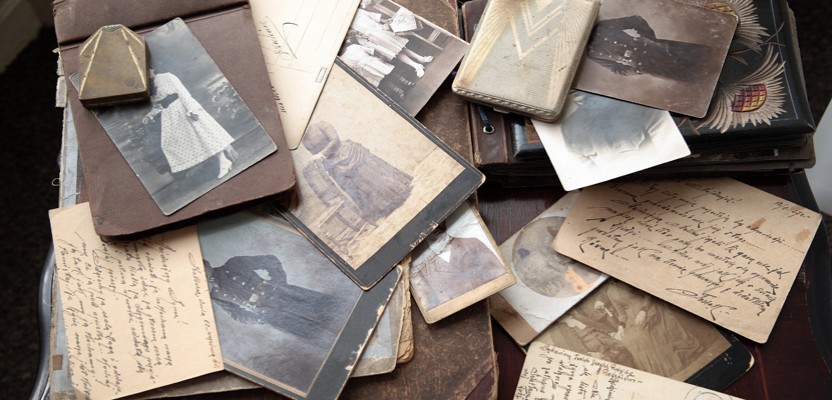The Tate Archive, the largest archive of British art in the world, recently opened its vaults to the public by putting thousands of artefacts online. In all, there are 52,000 letters, photographs and sketchbooks belonging to some of the most notable British artists of the 20th century, all of which will be made available for public perusal. The artefacts, which include the love letters of the painter Paul Nash, the personal records of sculptor Barbara Hepworth, and 3,000 Nigel Henderson photographs, offer some truly fascinating insights into some of the British arts world's most unique minds. The Tate Archive is part of the Tate organisation, which includes the four museums; Tate Britain, Tate Modern, Tate Liverpool and Tate St Ives.

Nigel Henderson – Photographs of London's 1950's Jazz Scene
So far around 6,000 items have been uploaded, featuring 52 collections from 79 artists, but that makes up only around 0.6% of the entire archive, which is thought to house over a millions items. According to archive head Adrian Glew, the remainder of the archive should be online by summer 2015, and will include items from Eileen Agar, Prunella Clough and Kurt Schwitters. He said the artefacts have “Been a hidden treasure for too long,” and believes that although “It is a national archival treasure, it is for the enrichment of the whole world,” so he would like to see it reach as wide an audience as possible.
The Tate Archive recently opened its vaults to the public, putting thousands of artefacts online
The project was made possible thanks to a £2 million grant from the Heritage Lottery Fund, with Glew stating that the funding has also provided them with “The infrastructure to pursue further digitisation projects in the future.” It was important to Glew that the first batch of uploaded material was geographically diverse and decidely eclectic, as it's his hoped that “It might inspire other people to discover their own local archives, local museums, galleries and libraries.”

Paul Nash – Totes Meer (left) and Archive Photograph (right)
Highlights from the already released items include the surreal landscape photographs taken by war artist Nash in his later life as reference pieces for some of his most famous paintings. One of the photographs, for example, reveals a dump of abandoned (and decimated) Nazi war plans in Oxford, a photograph that served as a direct inspiration for “Totes Meer (Dead Sea),” one of his most revered works. The painter's tender side is also revealed in a series of love letter he wrote to his wife Margaret, which typify the kind of intimate items the archive will be making public for the first time. Glew said that in some of the letters “He also enclosed some pressed violets and primroses,” which have also been digitised for the site.
The project was made possible thanks to a £2 million grant from the Heritage Lottery Fund
Other highlights include over 100 letters between Walter Sickert and his friend and fellow artist Ethel Sands, and William Nicholson and his son Ben, as well as numerous photographs of artists generally seen as being quite po-faced, caught with their guards down. One particularly playful example reveals sculptor Eduardo Paolozzi posing in a vest with a pair of paper 3D glasses and pinching his nose closed with a pair of tweezers. Many of Graham Sutherland's incredibly colourful sketchbooks have also been digitised, with one book containing designs for his famous tapestry at Coventry Cathedral.

Eduardo Paolozzi – Personal Photographs
Visitors can also customise their own experience on the site, creating their own online albums, grouping together archive items that they can add to, annotate and share. Many of the items have been given a Creative Commons license too, which means they can be copied and shared freely for non-commercial use. A series of films exploring the ambitious project, and a learning programme working in partnership with key art organisations have also been launched. Tate will also be the first fine arts organisation to collaborate with the Zooniverse team (led by the University of Oxford) to crowdsource full text transcriptions of handwritten documents.
Benjamin Hiorns is a freelance writer and struggling musician from Kidderminster in the UK. He is fascinated by creative people and what makes them tick, so might very well spend a few hours this evening flicking through the Tate Archives.






